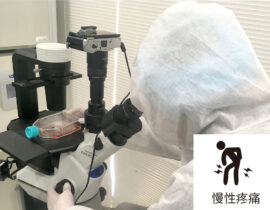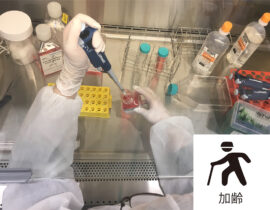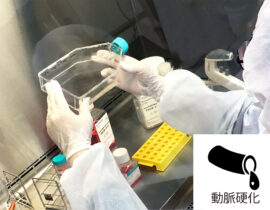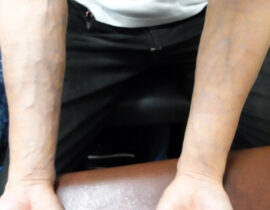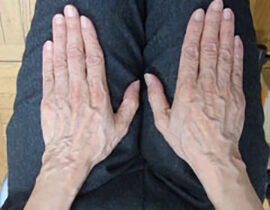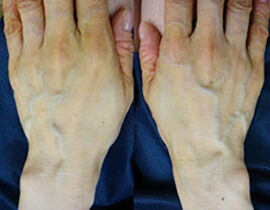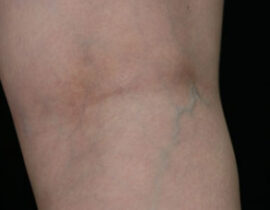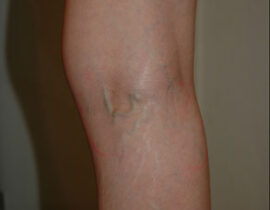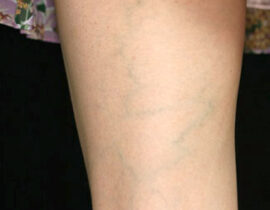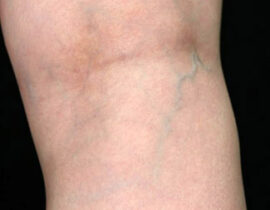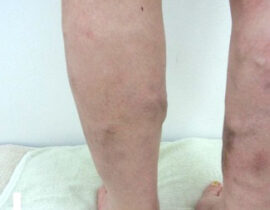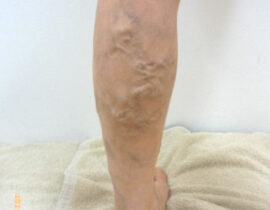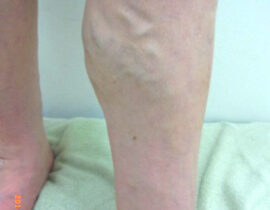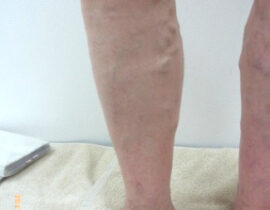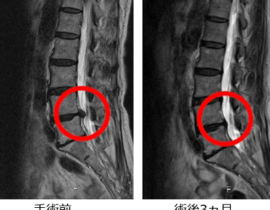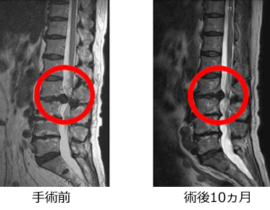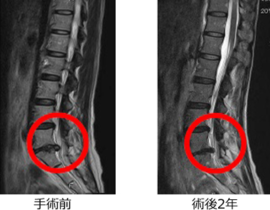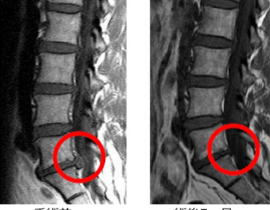- ホーム
- 【for English】PLDD
【for English】PLDD

Contents
What is PLDD (Percutaneous Laser Disc Decompression)?
At Kita-Aoyama D.CLINIC, we offer a minimally invasive laser treatment for herniated discs called PLDD, which can be performed without surgical incisions and in a short amount of time. This procedure involves inserting a thin needle into the affected disc and delivering laser energy through a fine fiber. As it causes minimal damage to surrounding tissues and is performed under local anesthesia, even patients with underlying health conditions can safely undergo the procedure.
Our board-certified neurosurgeon will evaluate the suitability of PLDD through comprehensive consultation, physical examination, and MRI imaging. We take great care in selecting appropriate candidates to ensure high treatment precision. As a result, our symptom improvement and patient satisfaction rates exceed 90%, significantly higher than the general average of 60%.
Indications for PLDD
You may be a candidate for PLDD if you experience the following symptoms:

Herniated disc conditions vary widely, and PLDD specifically targets only the disc without altering surrounding bones, ligaments, cartilage, or muscles, making it a low-risk treatment option. If you're experiencing unresolved symptoms, we encourage you to consult us.
How PLDD Works
PLDD stands for Percutaneous Laser Disc Decompression. The treatment involves inserting a laser fiber into the disc and vaporizing part of the nucleus pulposus—the gel-like material inside the disc that cushions the spine. By reducing pressure on the nerve caused by the herniation, symptoms can be significantly improved.
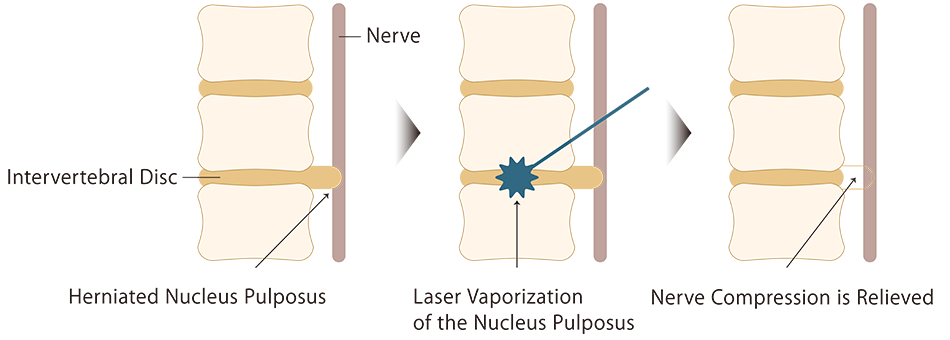
Features of Treatment
【1】Outpatient Procedure
No hospitalization required. Return to daily activities within hours.
【2】Minimally Invasive
Gentler on the body than even endoscopic surgery.
【3】Expert Neurosurgeon
All procedures are performed by a highly trained neurosurgeon specializing in spinal nerve disorders, ensuring safe and accurate treatment.
Treatment Process
- Initial Consultation(We kindly request the presence of an interpreter for foreign visitors.)
・Completion of a medical questionnaire
・Medical consultation, including an explanation of the procedure, expected outcomes, potential risks and complications, and treatment costs
・MRI imaging and evaluation of suitability for PLDD - Entering the Treatment Room
Patients undergoing lumbar spine treatment will change into a full set of disposable garments, while those receiving cervical spine treatment will only need to change their top. Please wear clothing that can get soiled during disinfection procedures. - Positioning with Fluoroscopic Guidance
A fluoroscope is used to confirm and adjust the precise position of the treatment site. As each patient’s spinal curvature and alignment differ, fine adjustments are made to optimize both the body position and the fluoroscope. - Local Anesthesia
After carefully disinfecting the area where the needle will be inserted, a sterile drape is placed to isolate the treatment site. Local anesthesia is administered along the planned needle path.
If the patient feels significant anxiety or tension, a mild sedative may be given. - Needle Insertion and Position Confirmation
A fine puncture needle is inserted into the disc under real-time fluoroscopic guidance. The needle penetrates the annulus fibrosus (the outer layer of the disc) and is precisely positioned into the herniated nucleus pulposus. - Laser Application
A laser fiber is inserted through the previously placed needle. Laser energy is then applied to the herniated portion of the disc according to the treatment plan. Most patients do not feel pain during the laser application; however, if the heat stimulates inflamed nerves, discomfort may occur. Please inform the attending medical staff if you feel any pain. - Post-Treatment Rest and Evaluation
After the procedure, you will rest in bed for approximately one hour to monitor for potential drug side effects, confirm treatment effectiveness, and check for complications.
If a sedative was used before the procedure, this rest period also allows time for it to wear off.
Following a brief post-treatment examination by the physician, you may return home.
The entire process, from arrival to discharge, typically takes less than two hours. - Aftercare
For two weeks following the procedure, patients are advised to wear a supportive corset (or a neck collar for cervical cases) to protect the treated area. However, in some cases, immobilization may worsen pain, so please follow your physician’s instructions regarding brace usage.
Case Reports
Case 1: Lumbar Disc Herniation (Female, 60s)
The patient suffered from chronic lower back pain for five years and increasingly intense pain that became unmanageable with medication. She underwent PLDD for a lumbar herniated disc and reported a full return to her daily activities. Post-treatment MRI confirmed the disappearance of the herniation.
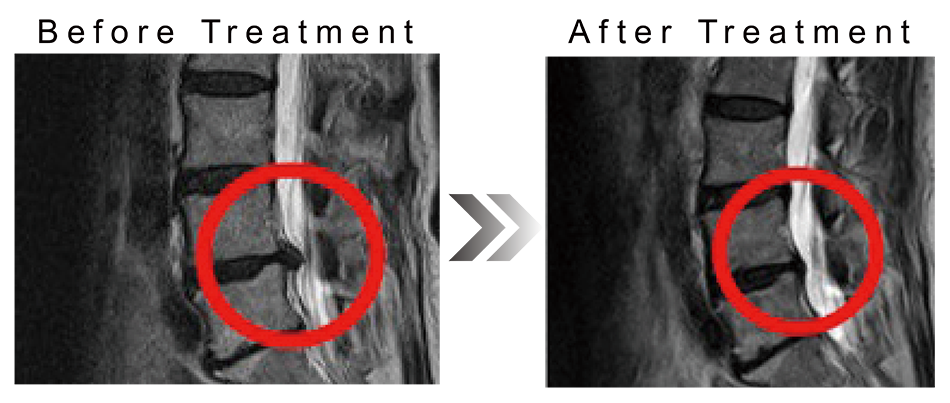
Treatment Duration: Outpatient procedure (1 day)
Cost: ¥550,000
Treatment Risks: There is a possibility that pain or numbness in the lower back and legs may persist for several days to approximately one month following the procedure.
Case 2: Cervical Disc Herniation with Straight Neck (Male, 40s)
This patient experienced chronic shoulder stiffness, back pain, and numbness in the arms. After undergoing outpatient PLDD, his symptoms significantly improved within two weeks, and pain medication was no longer necessary after two months.
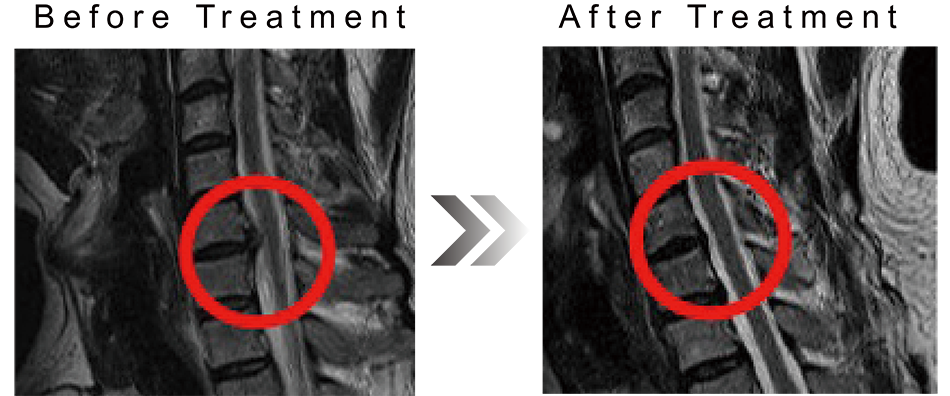 Treatment Duration: Outpatient procedure (1 day)
Treatment Duration: Outpatient procedure (1 day)
Cost: ¥550,000
Treatment Risks: There is a possibility that pain or numbness in the lower back and legs may persist for several days to approximately one month following the procedure.
Treatment Costs
PLDD is considered elective and is not covered by national health insurance in Japan. Costs vary based on the number and location of treated discs.
- Lumbar Spine: ¥550,000–¥880,000 (incl. tax)
- Cervical Spine: ¥660,000–¥990,000 (incl. tax)
Potential Risks and Complications
While PLDD is associated with fewer complications than traditional surgery, there are still rare risks including:
- • Nerve root injury
- • Discitis or vertebral endplate inflammation
- • Infection
Compared to other surgical options, PLDD results in minimal structural damage and no reported cases of worsening spinal integrity.
Conventional surgery for herniated discs often involves large incisions, tissue damage, and hospitalization with a risk of serious complications. Even with endoscopic techniques, which are less invasive, there remains the risk of organ injury.
In contrast, PLDD is a low-risk outpatient procedure that typically takes around 15 minutes. After about an hour of rest, patients can walk home and resume normal activities quickly. The needle puncture leaves only a tiny mark, and the likelihood of complications is extremely low.
Contact Information
Kita-Aoyama D. Clinic(7-minute walk from Omotesando Station, 5-minute walk from Gaienmae Station)
3-7-10 Jingumae, Shibuya-ku, Tokyo, ARK WISE BLDG.
TEL: 03-5411-3555
(Mon–Sat: 9:30–18:00)

